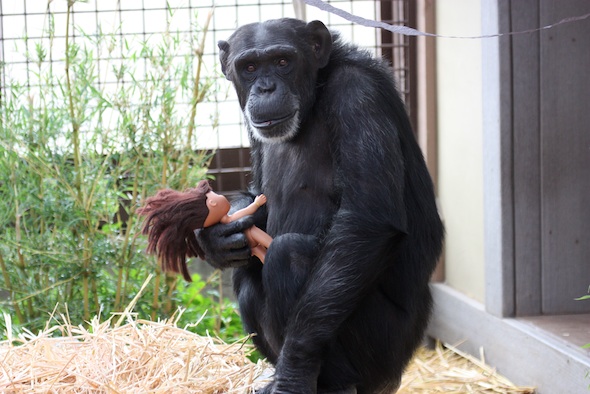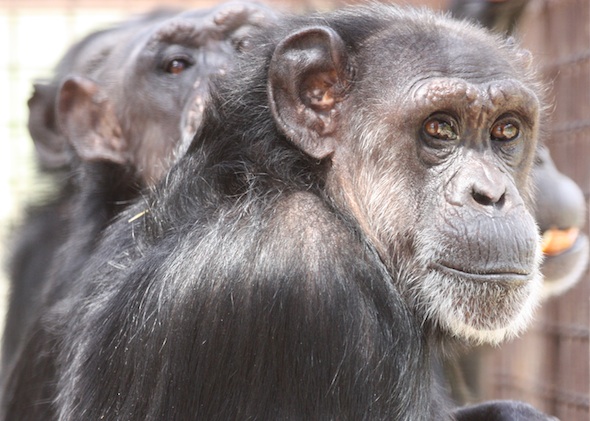Primatology is such an interdisciplinary field—it’s a mix of anthropology, psychology, zoology, biology, and ethology—and depending on a primatologist’s background, they have very different interests. If you have an anthropology background for instance, you might be interested nonhuman primates from the perspective of human origins for group size, culture, linguistics, and so on.
My background is in psychology, so in many of my classes we studied comparative cognition of nonhuman primates and humans. One thing comparative psychologists study is theory of mind. Do nonhuman primates have a theory of mind? That is, do they understand that other individuals have different beliefs, desires, and perception than their own? There’s a ton of behavioral measures that researchers use to determine if an individual—nonhuman or human—has a theory of mind.
One behavior that is evidence of a theory of mind is eye gaze and joint attention. Chimpanzees, like humans, communicate with eye gaze. They use it with each other and with humans, too. For instance if some food has dropped just out of reach, Burrito might get a caregiver’s attention by making some noise, and when they approach him he will look straight toward the food item. If we follow his gaze we see the peanut he’s trying to get. Things like this happen all the time, and for us, common sense would say that of course chimpanzees have a theory of mind. Burrito understands that until he grabs my attention and points it out to me, I am not aware of the peanut lying just outside the caging.
Very frequently we are asked if eye contact is OK with chimpanzees. Well, it is! And they make eye contact quite frequently. It’s one way they communicate with us.








